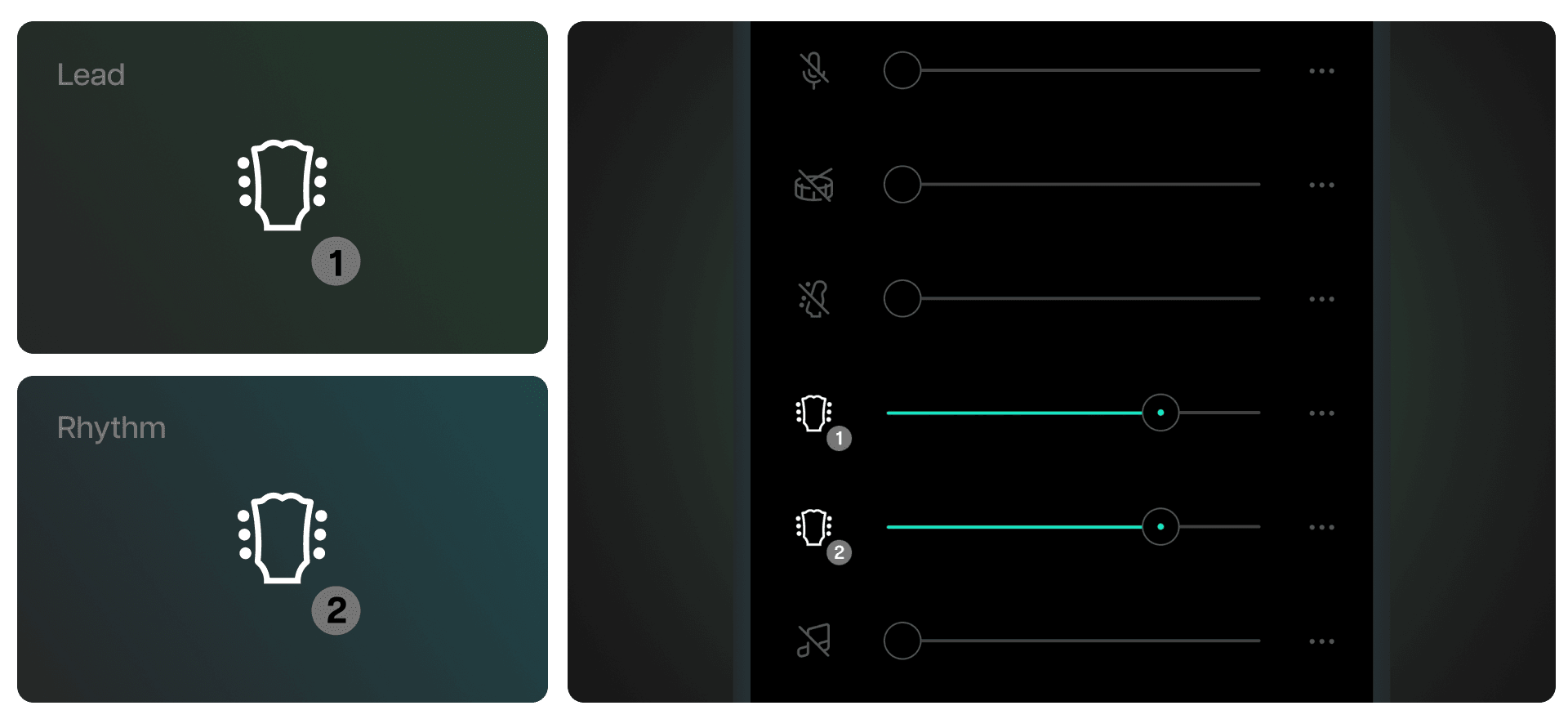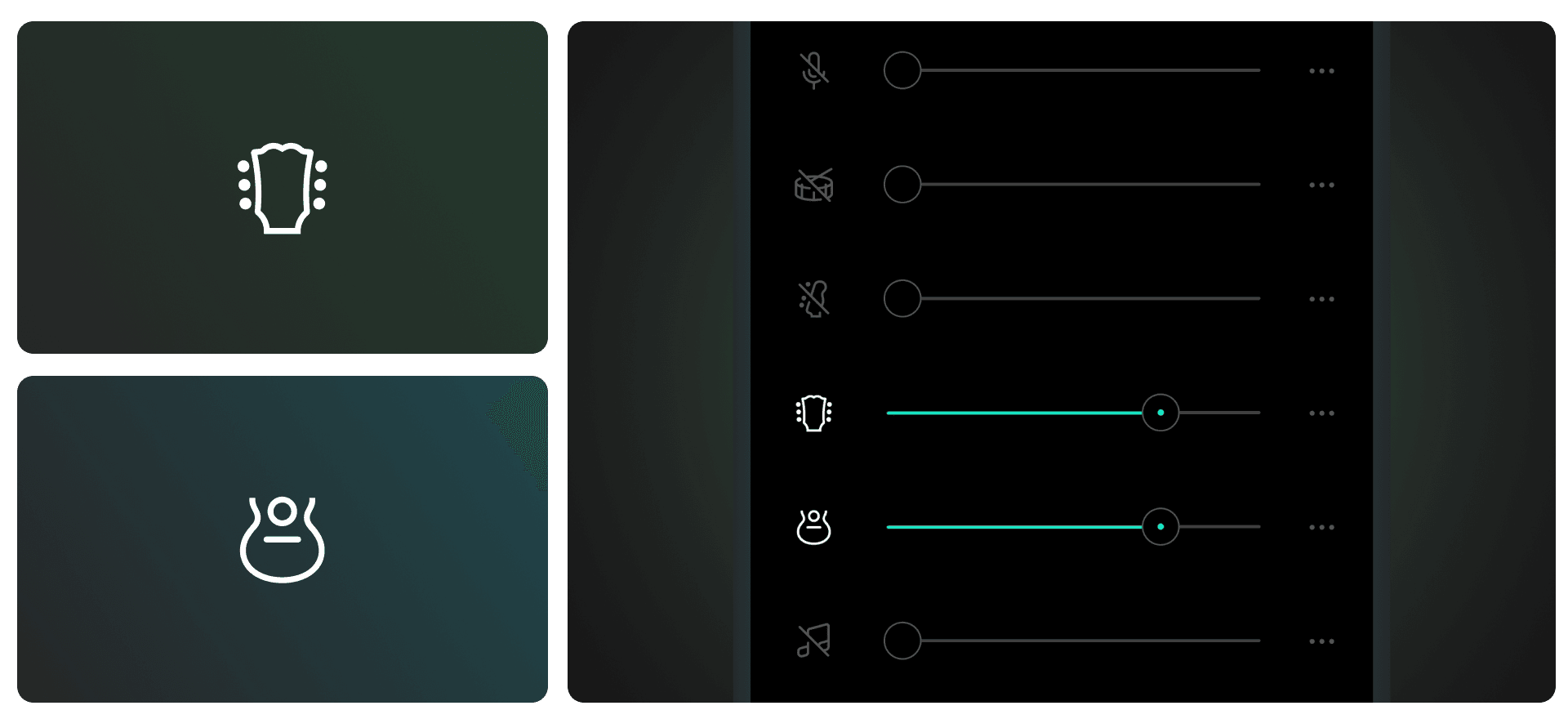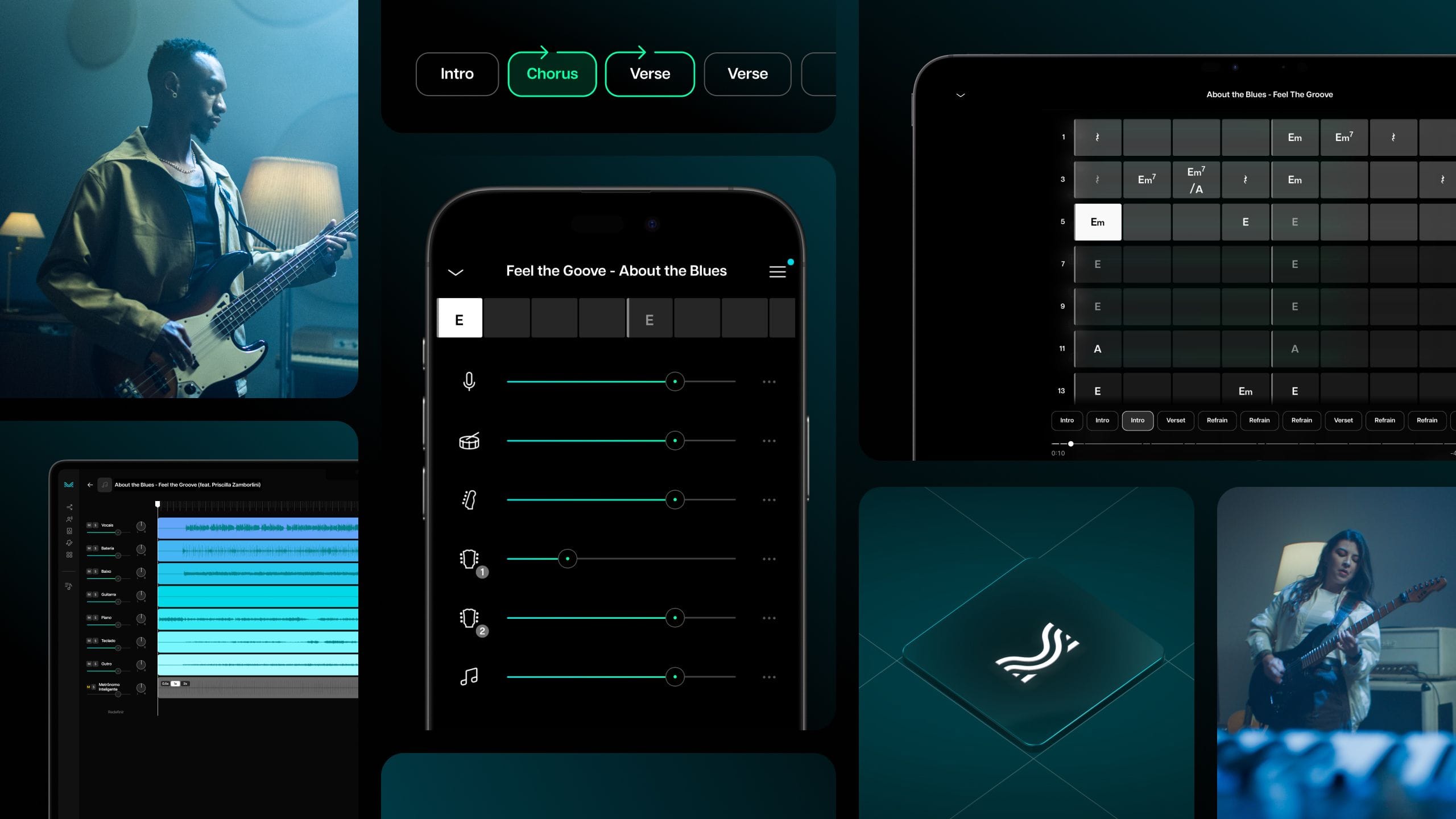We're excited to introduce our latest update: the new Guitar Separation Models.
Moises has been at the forefront of music separation technology for a while, harnessing the power of artificial intelligence.
Now, we're breaking new ground again by introducing the first-ever model that accurately separates lead and rhythm guitars.
The Lead & Rhythm Guitar Separation is now part of our famous AI Audio Separation, along with another addition: Acoustic & Electric Guitar Separation.
Keep reading to find out more!
The New AI Guitar Separation Models
Our groundbreaking guitar models concentrate on two pivotal areas:
- Lead & Rhythm Guitar separation;
- Acoustic & Electric Guitar separation.
Either of these options splits guitars into 2 tracks, making a total of 6 tracks, along with Vocals, Bass, Drums, and Others.
Our new separation capabilities are available for both Premium and Pro users. But as a Moises Pro subscriber, you get the added perk of Hi-Fi separation — for the new models and many others.

Lead & Rhythm Guitar Separation
If you've ever wanted to break down guitar solos or rhythm sections to fully grasp their intricacies, you’re in for a treat.
Our Lead & Rhythm Guitar Separation model is a game-changer, offering a clarity level once unthinkable.
Understanding the roles: lead vs. rhythm guitar
In a song that features lead and rhythm guitars, the rhythm guitar lays the foundation, serving as a heartbeat. It plays chords that provide the harmonic structure and drive the pulse, laying down the main topic of conversation.
On the other hand, the lead guitar adds excitement and embellishment. It brings melodies, riffs, and solos to the table, using various techniques to create a more expressive voice.
The spotlight or the groove: you choose
As you already know, our Lead & Rhythm Guitar Separation model makes us pioneers in effectively isolating these components. This underlines our commitment to innovation and to offering music lovers new, unique tools for audio manipulation.
- For rhythm guitarists:
By muting the lead guitar, you can clearly hear the chords the rhythm guitarist is playing. This helps you understand the song’s harmony and progression. It enables you to focus on the rhythm, the groove, and the underlying framework of the song.
With the lead guitar on and the rhythm guitar muted, you can play along with the song, creating an immersive practice experience. This allows you to experiment and apply your own style and interpretation, all while keeping pace with the song’s rhythm and melody.
- For lead guitarists:
Muting the lead guitar while leaving the rhythm guitar on allows you to play along and add your own interpretation or improvisations, gaining a more in-depth understanding of the song’s structure and enhancing your performance skills.
On the other hand, hearing the isolated lead guitar helps you grasp the song’s main melody and any flashy solos. You can pick up on phrasing and techniques used by the lead player, learning their unique style and approach to the song.

Acoustic & Electric Guitar Isolation
This model is designed to help you explore acoustic and electric guitars' distinct sounds and roles.
It’s especially useful when studying tracks where acoustic and electric guitars play different parts or when these two guitars intertwine.
Navigating the nuances: acoustic vs. electric guitar
Acoustic guitars provide a warm, natural tone. They often form the rhythmic foundation of a song, with dynamics defined by how the strings are struck.
Conversely, electric guitars offer versatile tones that can be modulated with effects pedals. They tend to present melodic lines, riffs, solos, and fills.
The warmth or the edge: focus on your passion
Using our Acoustic & Electric Guitar separation, you can isolate these two parts for learning or teaching purposes — or just for enjoyment.
- For acoustic guitarists:
Isolating the acoustic guitar track allows you to delve into the song’s rhythm and harmony. This is great for insights into the chords and strumming patterns. Learning becomes way easier with such focused, detailed understanding, helping you catch details that are hard to notice in a full mix.
The benefits continue when you mute the acoustic guitar track while leaving the electric guitar and other instruments on. This way, you can play along your way, experimenting inside the original song’s framework.
- For electric guitarists:
By muting the electric guitar track, you can play along with the other original instruments, including the acoustic guitar. Whether you’re learning techniques, practicing solos, or just enjoying the feeling of being part of the band, this can be an enriching experience.
In contrast, zooming into the isolated electric guitar track provides valuable insights into its nuances. This is excellent for studying melodies, riffs, techniques, and effects, as well as their interaction with the acoustic guitar and the song.
Moises’ solutions for guitarists
Moises provides a handy suite of tools for guitarists that goes beyond the AI Audio Separation. Check it out:
- Our Chord Finder ensures unprecedented accuracy in identifying and displaying chords in real-time. Yet, our cutting-edge AI technology is constantly evolving — so stay tuned for improvements and updates;
- The Pitch Changer empowers you to adapt the song key to fit your tuning or vocal needs without compromising the speed;
- Our Smart Metronome guarantees impeccable timing and seamlessly adjusts to tempo changes;
- Collaborative Setlists revolutionizes the planning and sharing of setlists with students or bandmates, making the preparation process for lessons, gigs, or jam sessions a breeze.
Building on its already innovative features, Moises is pushing the boundaries of music technology by introducing new models in AI Audio Separation. They redefine what's possible in the realm of guitar learning and production.







